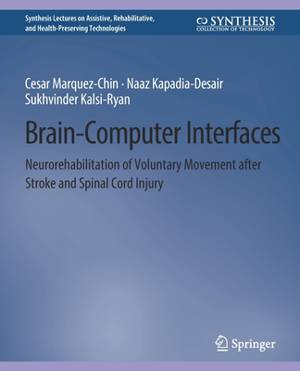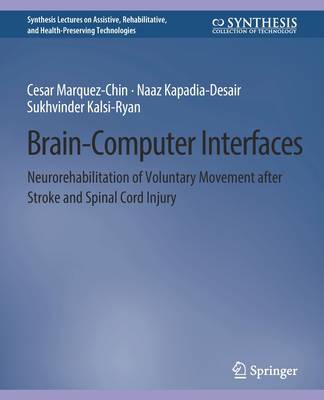
- Afhalen na 1 uur in een winkel met voorraad
- Gratis thuislevering in België vanaf € 30
- Ruim aanbod met 7 miljoen producten
- Afhalen na 1 uur in een winkel met voorraad
- Gratis thuislevering in België vanaf € 30
- Ruim aanbod met 7 miljoen producten
Zoeken
Brain-Computer Interfaces
Neurorehabilitation of Voluntary Movement After Stroke and Spinal Cord Injury
Cesar Marquez-Chin, Naaz Kapadia-Desai, Sukhvinder Kalsi-Ryan
€ 52,95
+ 105 punten
Uitvoering
Omschrijving
Stroke and spinal cord injury often result in paralysis with serious negative consequences to the independence and quality of life of those who sustain them. For these individuals, rehabilitation provides the means to regain lost function. Rehabilitation following neurological injuries has undergone revolutionary changes, enriched by neuroplasticity. Neuroplastic-based interventions enhance the efficacy and continue to guide the development of new rehabilitation strategies. This book presents three important technology-based rehabilitation interventions that follow the concepts of neuroplasticity. The book also discusses clinical results related to their efficacy. These interventions are: functional electrical stimulation therapy, which produces coordinated muscle contractions allowing people with paralysis to perform functional movements with rich sensory feedback; robot-assisted therapy, which uses robots to assist, resist, and guide movements with increased intensity while also reducing the physical burden on therapists; and brain-computer interfaces, which make it possible to verify the presence of motor-related brain activity during rehabilitation. Further, the book presents the combined use of these three technologies to illustrate some of the emerging approaches to the neurorehabilitation of voluntary movement. The authors share their practical experiences obtained during the development and clinical testing of functional electrical stimulation therapy controlled by a brain-computer interface as an intervention to restore reaching and grasping.
Specificaties
Betrokkenen
- Auteur(s):
- Uitgeverij:
Inhoud
- Aantal bladzijden:
- 133
- Taal:
- Engels
- Reeks:
Eigenschappen
- Productcode (EAN):
- 9783031004803
- Verschijningsdatum:
- 12/08/2021
- Uitvoering:
- Paperback
- Formaat:
- Trade paperback (VS)
- Afmetingen:
- 190 mm x 235 mm
- Gewicht:
- 267 g

Alleen bij Standaard Boekhandel
+ 105 punten op je klantenkaart van Standaard Boekhandel
Beoordelingen
We publiceren alleen reviews die voldoen aan de voorwaarden voor reviews. Bekijk onze voorwaarden voor reviews.











